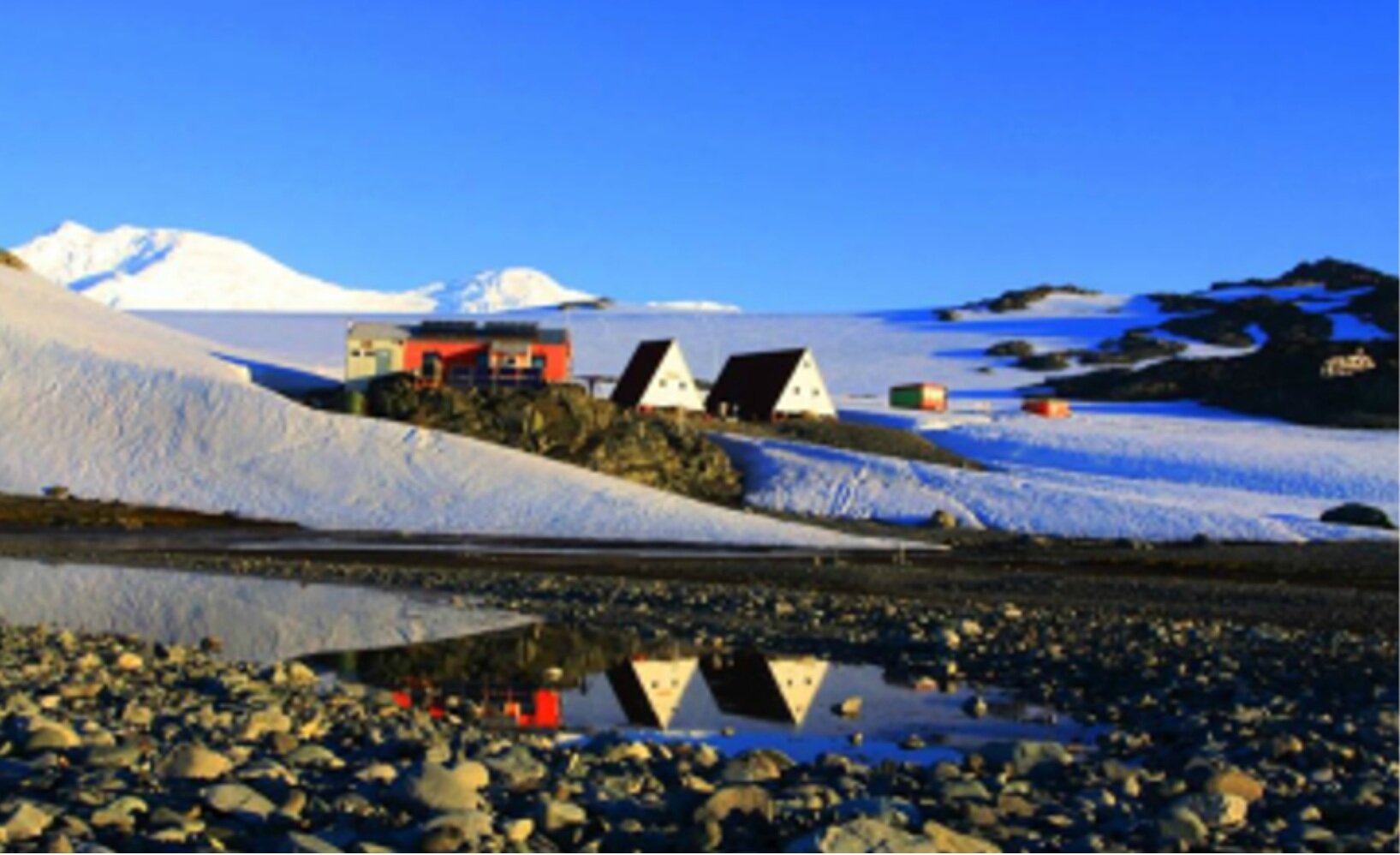
Bulgarian Antarctic Base St. Kliment Ohridski

Address
Livingston Island, South Shetland Islands.Operated by Bulgarian Antarctic Institute.
Station manager
Christo Pimpirev, Dragomir Mateev and Marta BluntStation Features
Opening year: 1993 Status: OpenFacilities
Station name and owner
Bulgarian Antarctic Base St. Kliment Ohridski is owned by the Bulgarian Antarctic Institute.
Location
The Bulgarian Antarctic Base “St. Kliment Ohridski” (BAB) is in the eastern part of Livingston Island, South Shetland Islands. It is located on the Bulgarian beach, Emona Harbour, east-northeast of Hesperides Point, with an elevation between 12 to 15 m above sea level. Local wildlife on Bulgarian beach includes fairly modest population of penguins and seals. At the same time, the base location offers convenient access to Mount Friesland, Burdick Ridge, Mount Bowles, southern Hurd Peninsula and Varna Peninsula areas. Near to the BAB is the Spanish Antarctic Base “Juan Carlos I”.
Climate data
Grey colours are WMO Climate Normals including maximum and minimum values. Blue colours are individual years.
Climate data for the stations where extracted via Copernicus Climate Data Store, from the global gridded reanalysis product:
ERA5 monthly averaged data on single levels from 1940 to present.
Description and source code: Roemer J.K. 2023. https://doi.org/10.5281/zenodo.10214922
Data Source: Hersbach et al. 2023. Copernicus Climate Change Service (C3S) Climate Data Store (CDS), https://doi.org/10.24381/cds.f17050d7
Biodiversity and natural environment
In the region of the Bulgarian base, there are three species of penguins, four of seals and numerous bird species that nest in the surrounding area. Lichens, mosses and other plants grow freely. Those located near the base are surrounded and protected by a fence, and there are sign-posted protected areas.
History and facilities
Following an aborted attempt on Cape Vostok in the northwest end of Alexander Island, two prefabricated huts were assembled on Livingston Island on April 26–29, 1988, by a four-member Bulgarian team logistically supported by the Soviet ship Mihail Somov. This refuge was later refurbished and inaugurated as a permanent base on December 11, 1993. Formerly known as Sofia University Refuge, in 1994 the base was named after St. Kliment of Ohrid (840–916 AD), a prominent Bulgarian scholar and bishop, by a Presidential decree. An expansion program was implemented at St. Kliment Ohridski in 1996–98, including construction of a new house, built with materials shipped from Argentina with the logistic support of the Spanish Antarctic Program. The house total area of 80 m2 allows for two sleeping rooms, a bathroom, a scientific laboratory, living room and a kitchenette. Between 2007–2010 were built two new houses (materials from Argentina) having four more bedrooms, a medical office and two scientific laboratories (geological and biological). Thus the total capacity of the base was expanded to twenty-two persons, providing better conditions for work and living, as well as possibilities for a winter stay, if necessary. An average of twenty people work at St. Kliment Ohridski during the austral summer, usually from late November or early December until early March.
General research and databases
Various scientists – ecologists, biologists, geomorphologists, seismologists, geologists, geodesists – work around the base. In the past five years Bulgarian scientists have been working with the scientists from Spain and Portugal, in a project called “Permafrost and Climate Change in the Maritime Antarctic” (PERMANTAR), exploring the frozen soils.

